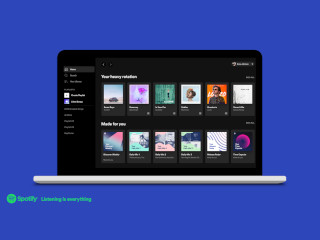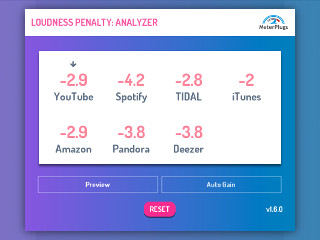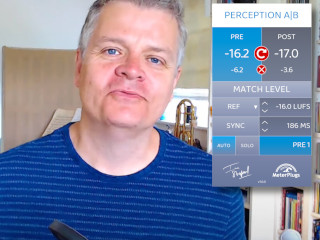Have you ever recorded a track at a low level and captured a lot of background noise, or fed outboard gear with a signal that was too “hot” and had it distort? In both cases, the problem boils down to sub-optimal signal levels: levels that are too high or too low. Gain staging is the process of managing signal levels throughout the signal chain, to strike a balance between noise levels and distortion. But how far do you need to go down this rabbit hole? When does gain staging matter and when doesn’t it?
In this post, we’ll look at situations where gain staging is important so that you understand why and when to use it.
Let’s start with the recording stage, where the signal is captured.
Recording
Electrical components, including microphones, pre-amps, guitars, etc., have a noise “floor” that is caused by various physical phenomena. Ambient sounds and room acoustics captured by a microphone might also be considered noise.
The “quality” of a signal can be measured by its signal to noise ratio (SNR). The higher the SNR, the more the signal stands out above the noise. To achieve a clean signal, you want the levels of your recorded element (e.g., singer or instrument) to be significantly higher than the noise floor - as high as possible, without distorting.
So, when choosing gain settings on your microphones, pre-amps and analog to digital converters, you will typically be attempting to achieve an optimal SNR.
Mixing / mastering
If you were to record and mix entirely in the analog realm, you would need to be aware of noise introduced by the recording equipment, the tape machines, the mixing console, the outboard effects, etc.
On the other hand, recording to digital and working entirely “in the box” means that noise almost becomes a non-issue. That is, digital processing does not inherently introduce additional noise. Arithmetic operations on a CPU are exact: if you add the same two numbers a million times, you’ll get the same result every time. If this weren’t the case, your computer would likely crash.
(While this is convenient, it doesn’t come for free. Going from analog to digital means trading a continuous signal for a discrete, finite-resolution one. The digital signal is sampled, only capturing a finite range of the original frequencies, which is a reasonable tradeoff since our ears can only hear a finite range of frequencies.)
If your DAW doesn’t introduce extra noise, do you ever need to worry about it?
Working “In the Box”
Let’s assume that you are working entirely in the box, using a floating-point DAW (i.e., most DAWs), and not using any plugins. A bit of a simplification, I know, but bear with me…
In this hypothetical scenario, gain staging becomes irrelevant because there is nowhere for noise to be introduced and floating-point DAWs can handle samples above 0 dBFS. Go ahead and clip your individual channels! It really shouldn’t matter when using a floating-point DAW.
However, make sure you don’t clip your master output when bouncing / rendering your final output! This is important because typically you will bounce from a 32 or 64-bit, floating-point signal to a 16 or 24-bit, fixed-point format. When this happens, samples above 0 dBFS will be clipped.
But what if you’re using plugins? Do you need to worry about signal levels then?
That could change things. It really depends on the plugin…
Working with Plugins
Most plugins, like DAWs, use floating-point processing and handle signals above 0 dBFS. However, if you’re using a plugin that simulates analog hardware or uses fixed-point processing (you may see this with older plugins), you’ll need to be careful with the levels that you feed it (i.e., gain staging becomes important). See “Do Plugins Have a Loudness Sweet Spot?” for details.
Routing Through Outboard Gear
If you’re routing your music out of your DAW and through outboard gear, your levels do matter, and will depend on what your outboard gear expects. You definitely don’t want to send a clipped signal, so make sure your peaks are well below 0 dBFS. (Really you should ditch the peak meter and use a true-peak meter.)
Now, if your outboard gear works best around 0 dBu (a voltage measurement), for example, what levels should you target inside your DAW?
That depends on how your DAC is calibrated since there is no universal mapping from dBFS to dBu. For example, your DAC could be calibrated such that a signal with an RMS of -15 dBFS corresponds to 0 dBu, but it could just as easily be calibrated such that -20 dBFS corresponds to 0 dBu. You’ll need to compare the RMS meter in your DAW to an outboard VU meter to determine the relationship.
Summary
If Goldilocks were an audio engineer, she’d have gain staging down pat. It’s about keeping your signal levels “not too hot, not too cold, but just right.” Finding that “sweet spot” will reduce noise and prevent clipping distortion.
It’s important to know why gain staging is necessary and when to use it. In this post we saw that careful management of your signal levels is important when using:
- outboard gear
- a fixed-point DAW or plugins
- plugins that simulate analog circuitry
Now I want to hear from you! Can you think of any other situations where gain staging may be necessary? Do you have a gain staging workflow? Leave your comments below!






